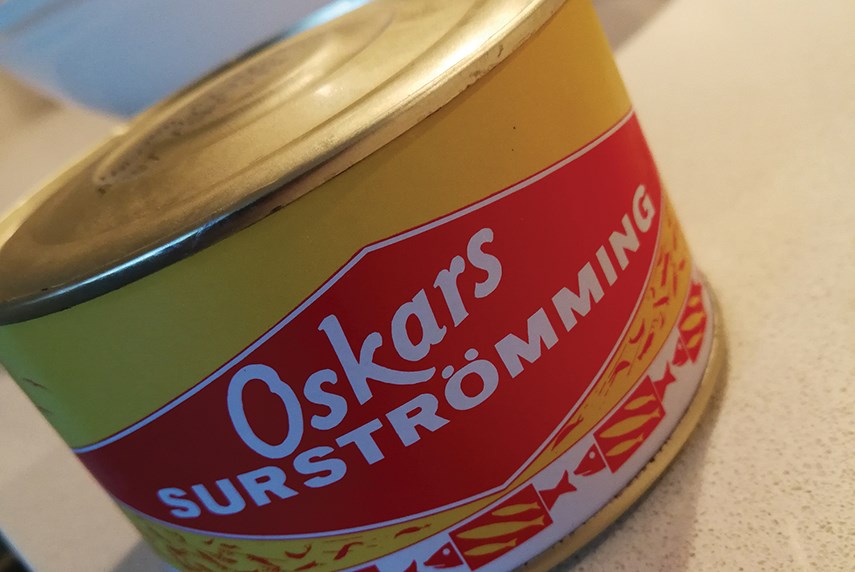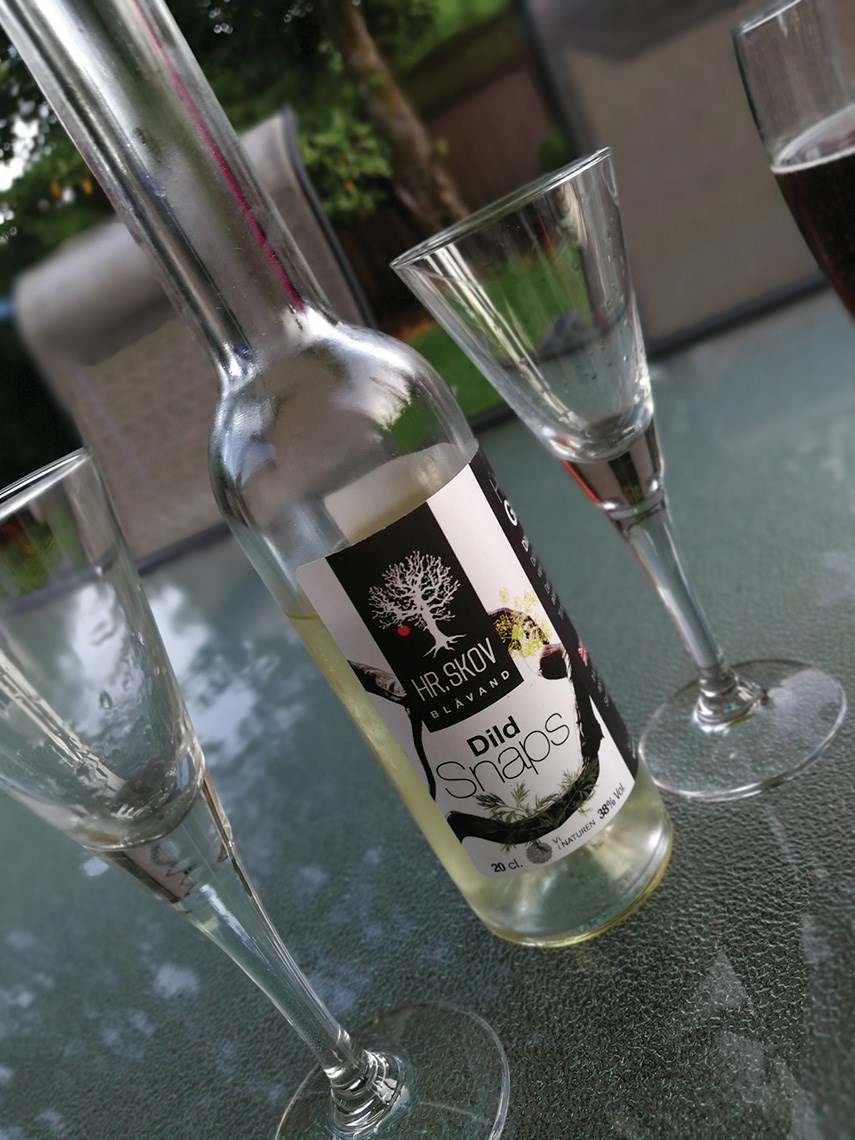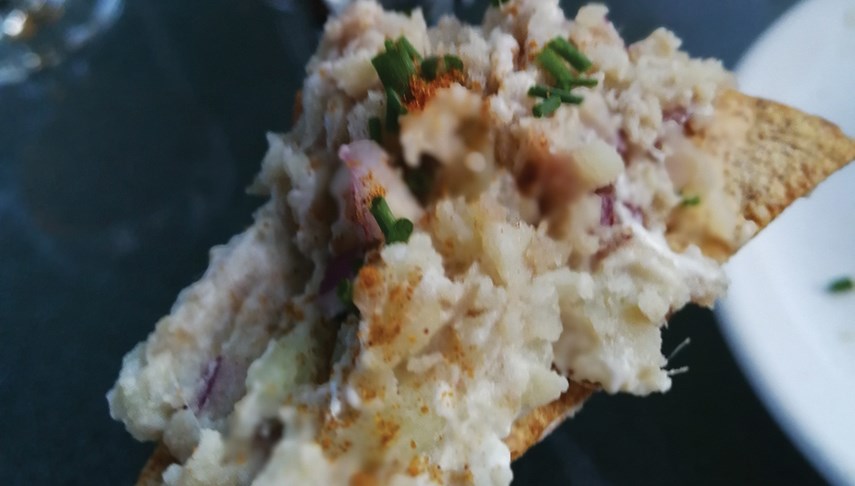The various YouTube videos on the subject, almost all of them hailing from the U.S., ultimately depicted people in the throes of regurgitation, doubled over in gag-inducing torment as the camera operator issued uncomfortable sounding grunts of their own, presumably born of sympathetic dry heaves.
In one example, a rugged looking guy with a goatee, chosen for his iron constitution, gnawed down a whole ghost pepper prior to tackling the video’s central focus, an infamous Swedish fermented fish specialty called surstromming.
It all reeked of exploitative theatre, to be honest, and didn’t much deter me from the imminent task at hand. Friend and surstromming tasting partner, the excellently named Chris B., had procured a can of the ages-old specialty during the most recent of his frequent trips to Scandinavia. We had finally managed to co-ordinate our travel schedules to liberate an evening on the North Shore together to sample this can, along with some other preserved fish goodies I had purchased on a quick work trip to Denmark. My contributions of tinned blue mussels and a jar of mustard-marinated herring proved much, much tamer than Chris’s can of Swedish sadism.
I have a rule in my house: food may not be treated as a dare. As a result, my kids are welcome to try some of that new hot sauce emblazoned with the skull and crossbones, for example, but they may not initially load up so much on a food item as to render it inedible. They are also not permitted to load up a plate with so much food that it becomes an exercise in gluttony and digestive comfort to finish. Most importantly, in the Dagenais household we do not use food of alien origin, which is most likely attended by cultural pride somewhere in the world, as a means of generating crass humour or eliciting vapid social media likes. I cannot abide by a reaction of “eww” to some new food thing.
It has long been my contention that “food as a dare” is the height of decadence, a symbol of a society that has more riches than sense. What does it accomplish to eat 22 hotdogs in a competition, for example, leaving your fellow “athletes” retching in overindulgent revulsion as you claim victory by virtue of keeping too much food down? Food is a necessity, first and foremost, and a means of both bridging and accessing cultures secondly. There is too much inequity in the world to waste it deliberately, and far too much cultural equity to be dismissive or flippant about novel dishes.
With this in mind, despite having watched a host of inane videos depicting first time surstromming eaters ham it up for likes and views, Chris and I embarked on our sampling with a degree of reverence for a dish that hails back to the 15th century and remains a signature of traditional Swedish cuisine. To that end, Chris had prepared the traditional accompaniments for the fish: sliced boiled potato, finely chopped onion, flatbread, and sour cream. I contributed a bottle of dill schnapps to the proceedings, and we steeled ourselves with a chilled shot of that before embarking on the tasting.

Surstromming is basically fermented fish. Baltic herring are caught just prior to spawning season, when they are plump and mature, and are brined using just enough salt to prevent the wholesale rotting of the fish, while still allowing fermentation to take place. The theory is that at the advent of this tradition, salt was expensive, and so was used as sparingly as possible as a preservative. Once it is brined, the herring is placed in barrels, in which fermentation begins, initiated by a lactic enzyme in the spines of the fish.
The fish is then canned. In the can, the fermentation continues and more potent, mature secondary and tertiary aromas and flavours develop. The resulting can, when ready to open, is distended and misshapen and must – let me emphasize this part – must be opened outside. In fact, Chris inserted the can of surstromming into a plastic bag, along with his forearms and the can opener, and broke the seal of the can in there. There was an audible hiss as the pressure was released, with a spray of fine, fishy mist. Almost instantly, the cool autumn air was overtaken by an intense, undeniably putrid, almost chemical smell. A Japanese study has ranked surstromming as one of the most putrid smelling edible foodstuffs on the planet, and I must confess that of all the unique things I have deigned to put in my mouth in my lifetime, this was the most malodorous.
That said, I feel compelled to say in the same breath (this comparatively clean, pure breath) that the scent of surstromming is its most challenging attribute and the rest of the experience, while intense, is far from gag-worthy. The fish itself, which must be deboned and skinned, a task easily achieved using a fork and sharp knife, has a complex but not altogether unpleasant funk to it, which is tempered by the various traditional accompaniments and the herbaceous heat of the schnapps. There is a sharp sourness to the fish on first bite, but that gives way to a buttery texture and earthy headiness, not altogether unlike a hot anchovy atop a pizza, only significantly less salty. Chris’s 11-year-old son, perhaps inspired by non-exploitative approach to trying this dish, gave it a go himself, concluding, quite accurately, I suggest, that it was nowhere near as vile as he anticipated, but that he probably would not go out his way to try it again anytime soon.
Once the various proportions of potato, onion, and sour cream were determined, we made relatively short work of the herring and collected the remnants for deep freezing until garbage day on the block.

The fact that surstromming remains a dare food, the subject of crude videos, disappoints me. You see, I think it reveals a certain wilful ignorance, a deliberate effort to avoid context and heritage. The way these folks approach it, to pop the lid of the can and extract, using just their fingers, a whole herring, bones, scales and all, and attempt to chomp that down unaccompanied? That’s nonsense. It’s like trying an oyster for the first time by gnawing your way through the shell. Knock back a chili pepper, if you must, by all means; there is no particular cultural significance at work in the consumption of raw, unadorned Carolina Reapers. That Double Down breadless burger abomination from KFC? You know, the one with two “buns” of deep fried chicken sandwiched around bacon, cheese, and sauce? Now, that’s a dare. That’s KFC saying to consumers, here’s the single unhealthiest, unnecessarily salty, fatty, greasy thing our team of food marketers could fathom. Now go for it.
The only reasonable aspect of the otherwise culturally barren food dare phenomenon is, in my opinion, when someone for whom the food in question has cultural significance wants to test your mettle by inviting you try it. When I first visited Japan, my colleagues asked if there was anything I didn’t eat. I said no and they promptly had me eating uni (sea uchin roe) by the kilo and natto (fermented soy bean paste) by the bowl. This, in their estimation, was an initiation of sorts, my ability to join them in the consumption of specialized regional cuisine permitting me an honorary sameness, an acceptance into their ranks, however temporary or superficial. Somehow, this sort of “dare,” which explores whether others can measure up to a subjective standard of steely resolve, feels more legitimate, more rooted in authenticity.



